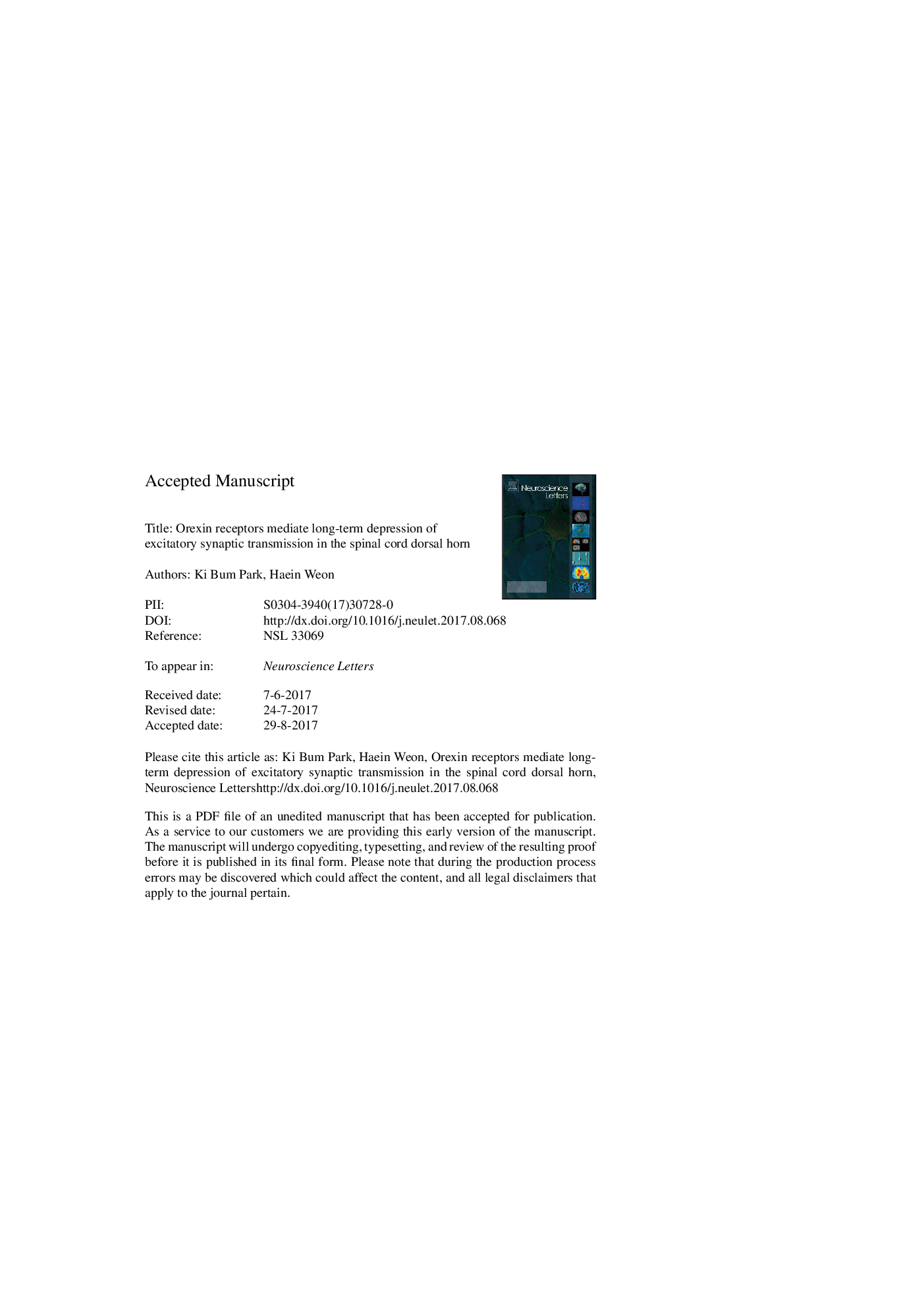| کد مقاله | کد نشریه | سال انتشار | مقاله انگلیسی | نسخه تمام متن |
|---|---|---|---|---|
| 5738521 | 1615039 | 2017 | 20 صفحه PDF | دانلود رایگان |
عنوان انگلیسی مقاله ISI
Orexin receptors mediate long-term depression of excitatory synaptic transmission in the spinal cord dorsal horn
ترجمه فارسی عنوان
گیرنده های اوریکین میانه ای از افسردگی طولانی مدت انتقال سیناپسی تحریک کننده در شاخ عقب نخاعی
دانلود مقاله + سفارش ترجمه
دانلود مقاله ISI انگلیسی
رایگان برای ایرانیان
موضوعات مرتبط
علوم زیستی و بیوفناوری
علم عصب شناسی
علوم اعصاب (عمومی)
چکیده انگلیسی
Neuropeptides orexin-A and -B are related to the regulation of sleep/wakefulness and feeding behaviors. Recently, the peptides have also been shown to yield antinociceptive effects in various pain models. However, it is not clear whether orexins are involved in forms of synaptic plasticity, such as long-term potentiation (LTP) and long-term depression (LTD), the increase and the decrease of synaptic efficacy, respectively. In the present study, we examined whether orexin receptor type 1 (OX1) and 2 (OX2) are involved in the induction or maintenance of LTD of excitatory synaptic transmission using transverse spinal cord slices of young rats. Repetitive electrical stimulation of Lissauer's tract zone at 2 Hz for 5 min (600 pulses), combined with a holding potential of â30 mV, induced LTD of the amplitude of excitatory postsynaptic currents (EPSCs) which are evoked by the activation of primary afferent fibers. The maintenance of LTD was significantly prevented by bath application of SB674042 (1 μM), an OX1 antagonist, or EMPA (1 μM), an OX2 antagonist. In addition, LTD was dependent on the NMDA receptor, as the NMDA receptor antagonist D-AP5 blocked the maintenance of LTD. Our study suggests that orexins, via activation of both OX1 and OX2, play a significant role in the expression of NMDA-dependent LTD, thereby contributing to the spinal modulation of pain transmission.
ناشر
Database: Elsevier - ScienceDirect (ساینس دایرکت)
Journal: Neuroscience Letters - Volume 660, 1 November 2017, Pages 12-16
Journal: Neuroscience Letters - Volume 660, 1 November 2017, Pages 12-16
نویسندگان
Ki Bum Park, Haein Weon,
